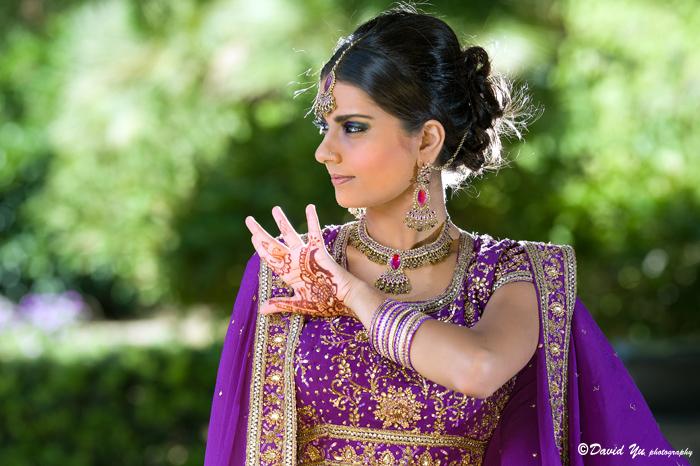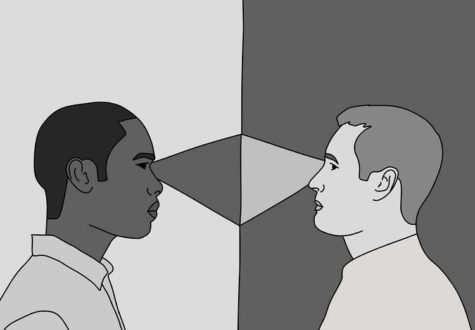Cultural Appropriation
http://bit.ly/215b0vB
Cultural appropriation; let’s break it down. Culture is the manifestation of a group of peoples’ ideas, thoughts, and beliefs. Appropriation is taking something for one’s own gain without the permission of the owner. When you combine the two, the result is cultural appropriation. Cultural appropriation is taking the elements of a culture other than your own. This most often occurs with the cultures of minorities.
Appropriation is not to be confused with acculturation or assimilation, which is when the culture’s elements are brought into and co-exist with the existing culture in harmony. Like what is often referred to as America’s “melting pot” culture. And it shouldn’t be mistaken with admiring and appreciating another person’s culture.
One can appreciate a culture by wearing and adorning that fashion as long as it’s in a respectful and tasteful manner. It’s when the object in question is being used as “dress up” or costume” that the wearer becomes an appropriator. The line between appropriation and appreciation is thin and very easily crossed with the wrong intent.
For example, if one’s mother goes to another country and buys a piece of their cultural fashion for you, and you wear it because you enjoy the style or want to honor the other culture, then that would qualify as appreciation.
The most common occurrence of cultural appropriation is using aspects of a culture as fashionable accessories.
Pieces of Native American cultures are often used in the fashion industry, war bonnets adorning t-shirts, costumes and being part of a mascot. The same is seen with Polynesian tribal tattoos, Chinese characters, and Celtic art.
The main issue seen with adopting these often sacred items is the lack of understanding the taker has of the original culture. The people who wear the appropriated clothing either have no want, need or interest to find the significance of the meaning behind what it is they are wearing. They simply want to ‘look cool’.
Particularly people of the majority culture are able to appropriate without being endangered, while the people of the minor culture are threatened when wearing and participating in the social norms of their own culture.
For example, the popular music event Coachella is where most celebrities steal from culture. War bonnets, war paint and bindis are commonly seen on the women, and some men, present. A big no is particularly aimed at the use of Native Culture at any event.
“Playing Indian” has a negative connotation to it, taking its roots back to the Boston Tea Party era. Wearing the war bonnets and paint furthers the idea that the Plains Native culture was a singular aspect, when in reality there were hundreds of tribes present. They are worn by men who have a great place of respect in the tribe and seen as great spiritual and political importance and by stealing the war bonnet, the person is watering down the historic and ceremonial meaning behind it.
Artists like Katy Perry and Miley Cyrus are examples of people and groups appropriating aspects of different cultures for fashion.
When Katy Perry dressed as a geisha during the American Music Awards in 2013, she misrepresented an entire culture, and due to her high status in the public eye, gave the West a warped and incorrect version of Asian culture, while also donning a “yellow face”. This is not the only instance that Perry stole and misinterpreted another culture. She appeared as “Katy Patra” in her music video for “Dark Horse”, the video taking only a sample of what Egyptian culture is like and shedding it in a comical manner and makes the entire Ancient Egyptian culture a costume. She also adorns a “Jewfro” as a bar mitzvah DJ in her music video for “Birthday”. It can be seen as admiration in one light, but isn’t due to only taking what is stereo-typically part of a culture and using that, not all aspects of Asian, Egyptian and Jewish culture.
Miley Cyrus in 2013 became most associated with cultural appropriation. Using only black women as props and for twerking, a dance style rooted in African-American culture, on them. Its the use of the black women as accessories and taking only the stereotypes that all black culture has is strip clubs, pimps, and drug dealers that perpetuates the appropriation. As a rich majority, she is “playing” as a minority, representing black culture in a negative way as Katy Perry has done.
Alternately, some people of a minor culture don’t care about certain adoptions of culture in the majority culture.
According to Anjali Joshi of the Huffington Post, a bindi should not be considered cultural appropriation due to its significance being lost on Southern Asians. She states that because the people of the culture the bindi associates with didn’t preserve its holiness, it cannot be considered appropriation. The culture evolved from being a traditional design to having crystals and multi-colored bindis coming from the region its mainly attributed.
With evolving cultures and the “melting pot” that the world, America especially, is, the mix of cultures isn’t surprising. The adoption of body modifications, like a nose piercing or tattoos, has become widely accepted amongt the public as fashion. The nose piercing dates back to Middle East 4,000 years ago and is tied with Hinduism, but it has long since been seen as ‘just another piercing’ and not a part of another culture. Tattooing dates back to 3300 BCE, and makes an appearance on Ancient Egyptian mummies and tribes seen all around the world.
Whatever the case, cultural appropriation comes down to the intent and setting the wearer has and is in. When the wearer is respectful and tasteful of the culture’s dress they are taking and not assuming the culture in a rude and mocking way; that differentiates appreciation and appropriation.
As someone who hasn’t experienced this due to my own culture, I have no accurate way to understand or represent what those who are oppressed go through.
Bottom line; cultural appropriation is disrespectful and a rude caricature to the people who live it and breathe these cultures every day. To reiterate, stealing a culture in order to be “fashionable”, without representing the whole culture properly, is degrading, and rude, and reducing these sacred aspects of cultures to accessories is racially oppressive.

Marissa Vrba is a senior at George Ranch. This will be her second year on The Wrangler and she loves to write and learn about many new things. Marissa...













